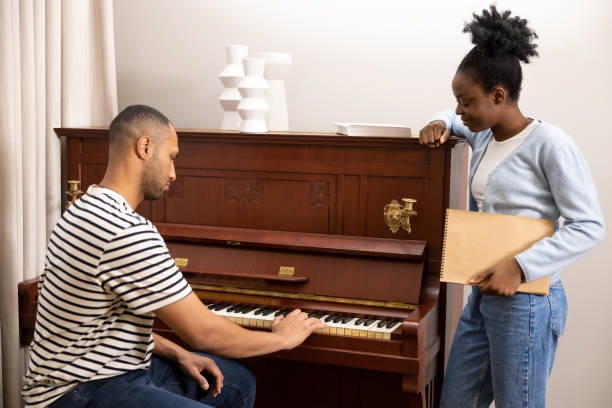Moving a piano isn’t like regular furniture transport. Pianos are heavy, fragile, and very valuable. Without proper care, they can get damaged or cause injuries. That’s why specialty movers follow a carefully planned 10-step process. This strategy helps keep the piano safe and makes moving it smoother.
Professional movers don’t leave anything to chance. They use proven techniques to avoid costly repairs and ensure the safe arrival of your cherished instrument. Here’s how they do it, step by step.
The Importance of a Professional Piano Moving Strategy
Why DIY Piano Moving Is Risky
Moving a piano yourself? It might seem like a money-saver. But it can quickly turn into a headache. Pianos are very heavy—some weigh over 1,000 pounds—which makes lifting and balancing tricky. Without proper tools and experience, you risk dropping the piano or damaging your home’s walls and floors. Plus, injuries from trying to lift or maneuver such a heavy object are common.
Experts estimate that injuries from improper piano moves happen more often than people think. Costs from damages can run into thousands, and some pianos sustain irreversible harm. So, attempting a move without professional help is a gamble that doesn’t usually pay off. Ensure that moving grand pianos reaches its destination safely with specialized techniques and tips.
Benefits of Hiring Specialty Movers
Choosing pros offers many advantages. They have the skills, tools, and experience to do the job right. Professional movers use special equipment like piano dollies, straps, and padding to safeguard your instrument. They’re also insured, meaning your faultless move is protected from accidents.
Imagine saving a vintage upright piano from scratches or dents that could lower its value. That’s exactly what expert movers can do—protect your investment while making the move as easy as possible.
Step 1: Detailed Planning and Site Assessment
Conducting a Site Inspection
First, movers walk through your home. They measure doorways, staircases, and hallways. This helps them plan the easiest path for the piano. They also take note of flooring—if it’s uneven or slippery, extra precautions are needed.
They look for potential challenges—tight corners, narrow door openings, or decorative trims—and plan how to navigate around them safely.
Creating a Moving Plan
Using all this info, they map out steps in advance. The plan includes the best route, positioning of moving equipment, and any alternate paths in case obstacles appear. This prep avoids surprises during the move.
Step 2: Gathering Necessary Equipment
Essential Moving Tools
Specialized equipment makes moving easier and safer. Movers gather tools like:
- Heavy-duty piano dollies
- Straps that hold the piano in place
- Thick padding and moving blankets
- Lift straps for added support
- Gloves for grip and protection
Using these reduces the chance of scratches and accidents. It also saves energy and prevents injuries.
Safety Gear for Movers
Movers wear protective gear such as gloves, back braces, helmets, and sturdy shoes. Regularly checking equipment ensures safety standards stay high.
Step 3: Prepare the Piano and Surrounding Area
Piano Protection
Before moving, the whole piano is wrapped with blankets or padding. Plastic wrap can protect the finish from scratches and dust. These simple steps keep your prized instrument looking new.
Clearing the Pathway
All obstacles—furniture, rugs, or decorative items—are moved out of the way. Flooring is also protected, especially if floors are wooden or tile. Securing or covering surfaces prevents damage or scratches during transit.
Step 4: Securing the Piano
Lifting and Support Techniques
Professional movers use proper lifting techniques. They work as a team, coordinating every move. Lift straps distribute weight evenly, reducing strain on their backs and the piano.
Expert movers stress the importance of good body mechanics. They bend their knees, keep their backs straight, and lift with their legs—helping prevent injuries.
Positioning on Moving Equipment
Once lifted, the piano is carefully placed onto dollies or sliders. It’s checked to see if it’s balanced. A stable load is less likely to shift or tip during the move.
Step 5: Maneuvering Through Tight Spaces
Navigating Doorways and Corners
Moving through narrow doors, staircases, or sharp turns requires skill. Techniques include tilting the piano slightly or pivoting it carefully. Moving teams communicate constantly, ensuring everyone moves at the same pace.
Managing Elevations
Using ramps or hoists makes stairs or uneven ground less risky. Clear signals and teamwork are key on these complex maneuvers.
Step 6: Transporting to the Vehicle
Securing for Transit
Inside the vehicle, the piano needs to be stabilized. Straps and padding hold it steady. This prevents movement that could cause damage during transport.
Choosing the Right Vehicle
A spacious, climate-controlled truck with good suspension is best. That protects against temperature swings and jolts. Proper loading techniques ensure the piano stays put when the vehicle hits bumps.
Step 7: Safe Loading and Unloading
Loading Procedures
Using ramps or lifts, the team carefully slides or lifts the piano into the truck. This minimizes strain and risk of drops.
Unloading at New Location
Once parked, they unload with the same care. Precise placement and leveling are essential. Moving a piano into tight corners or through doorways requires planning and patience to avoid damage.
Step 8: Final Placement and Setup
Positioning in the New Space
The piano is positioned where it sounds best and stays stable. Professionals check that it’s level on the floor. Proper placement enhances acoustics and prevents future issues.
Tuning and Inspection
After arriving, a quick inspection is followed by tuning. Moving can sometimes shift strings or loosen pins, affecting sound quality. A professional ensures the instrument sounds perfect again.
Step 9: Post-Move Inspection and Care
Damage Assessment
A thorough look-over checks for scratches, dents, or misalignments. Taking photos helps with insurance claims if needed. Early detection avoids costly repairs later.
Maintenance Tips
Care for your piano post-move involves humidity control, proper cleaning, and regular tuning. Sudden temperature changes can crack wood or affect tuning, so maintain a stable environment.
Step 10: Professional Follow-Up and Insurance
Engaging Experts for Fine-Tuning
A piano technician can evaluate if tuning or repairs are needed after the move. Professionals know how to restore your instrument perfectly.
Insurance Coverage
Ensure your insurance covers damages or accidents during the move. Reputable movers help document the process and handle claims if something unexpected happens.
Conclusion
Moving a piano is a delicate task that requires careful planning, proper tools, and experience. The 10-step process used by specialty movers guarantees your instrument is protected from start to finish. Investing in professional help isn’t just about convenience—it’s about safeguarding a valuable, irreplaceable piece of art. With expert movers guiding the way, your piano reaches its new home safely and soundly.



